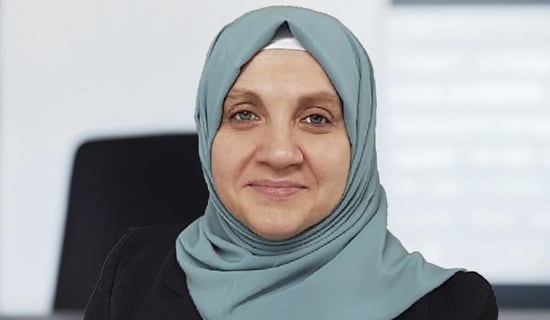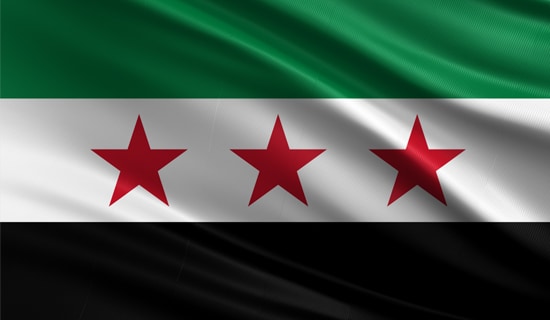Russia In The World is a new MEMRI Russian Media Studies Project review of Russia's geopolitical interests and areas of penetration. This edition of Russia In The World deals with Russia's interests in Latin America, and specifically Nicaragua.

The original image was taken from Studiya 13's Facebook page.
Following Russia's annexation of Crimea, Moscow's interest in Latin America extended beyond a shared ideology that frowned on external intervention ostensibly in the name of democracy. Western attempts to isolate Russia in response to the Ukrainian crisis induced Moscow to seek partners to expand its political and economic relations. In an article published in 2014, Alexey Chernyshev, the academic editor of Latin America Journal, which is part of the pro-Kremlin think tank Russian International Affairs Council, wrote that due to the Ukrainian crisis and the ensuing economic and trade conflict between Russia and the West, Moscow's interests in Latin America goes beyond the scope of geopolitics "to include the sourcing of new food produce suppliers from this region."[1]
As for economic relations, Russia is trying to develop a dialogue with Latin America's regional integration associations, primarily with the Community of Latin American and Caribbean States (CELAC), the Southern Common Market (Mercosur), the Bolivarian Alliance for the Peoples of Our America (Alba), the Union of South American Nations (UNASUR), and the Andean Community of Nations (ACN).[2] Chernyshev writes that "the dominant role of pragmatism and commercial interests within cooperation" has become a new aspect of Russia's relationship with Latin American countries.
Concerning political and strategic cooperation, it is worth noting that Russia attempts to channel its efforts towards countries that support Russia's position in the Ukrainian crisis such as Cuba, Ecuador, Venezuela, Nicaragua and Bolivia and are cool to hostile towards the U.S. Latin America is a promising place for expanding Russia's geopolitical influence since many of the area's countries have longstanding ties with Moscow. The fact that these countries are located in the United States' "backyard" is a further incentive for reinforcing of relations with Latin America and getting back at the U.S. for NATO's eastward expansion in Russia's backyard.
Below are excerpts from an article, "Tanks Move to Nicaragua," published by Russian media outlet Gazeta.ru, on military cooperation between Russia and Nicaragua:[3]
The Nicaraguan Army Uses Russian T-55 Tanks
"On September 3, the Nicaraguan army is celebrating its 37th anniversary with a traditional military parade, where they are planning to display the T-72 tanks from Russia. [...] Nicaragua's ambassador [to Russia] Juan Ernesto Vasquez Araya expressed his interest in the Russian tanks a year ago, during the international Tank Biathlon competition that takes place in Russia every year. The Nicaraguan tank team that took part in the championship competed against others on armored vehicles provided by Russia. According to Araya, the military of his country had been unacquainted with this model of Russian tank prior to the Tank Biathlon, but they produced good results during the competition. Currently, the Nicaraguan army uses [severely antiquated] Russian T-55 tanks. 'We hope that our army will soon have the Т-72. I think we can speak about a purchase', said Araya then, emphasizing the broad military and technical cooperation between the two countries.
"In the spring of 2016, reports began to surface in the [Russian] mass media that the delivery of T-72 tanks from Russia to Nicaragua was starting. [The Russian news agency] RIA Novosti wrote that under the contract, Managua will receive 50 modernized T-72B1 tanks from Moscow.[4] The Rosoboronexport agency, responsible for arms export, has told Gazeta.ru that they have no comment on the contract with Nicaragua. It is probable that the supply of this equipment is conducted via direct cooperation between the military departments of both countries.
"Nicaragua's neighbors, in particular, Costa-Rica [which does not maintain an army], are concerned about Managua's tanks purchase and are concerned about the region's stability in the face of a possible arms race.
"This is not the only aspect of the Nicaragua-Russia military and technical cooperation that is troubling the international community. Thus, the Washington Free Beacon (WFB) expressed concern about the construction of a station [earmarked] for the Russian GLONASS navigation system in Nicaragua under the 2012 intergovernmental agreement on cooperation in space exploration. WFB suggested that an intelligence center might be disguised as a station and that the provision of this location to Russia was [a hidden] part of that very tank purchase deal. Allegedly, 50 T-72 tanks exceed the cost of the entire Nicaraguan defense budget. But the [Russian] Ministry of Foreign Affairs dismissed this idea as 'science fiction.'

T-72B1 (Source: Rbth.com)
Russia's Chief of Staff: '[Russia And Nicaragua] Are Linked By Strategic Partnership Relations Tested By Time'
"Moscow supplied Nicaragua with tanks, planes and artillery even in the days of the USSR - Soviet equipment comprised 90% of Nicaraguan army materiel. Military cooperation between the two countries almost ceased in 1990, when the Conservatives came to power [in Nicaragua], and the recovery started only in the mid-2000s.[5] Lately, Russia and Nicaragua have become rather close in the military sphere. Delegations from the Russian Ministry of Defense made several visits to Latin America, including the Defense Minister Sergei Shoigu's visit to Nicaragua [in 2015]. Military representatives from Managua also attended negotiations and international security conferences in Moscow.
"Valery Gerasimov, Russia's chief-of-staff, has emphasized that the countries 'are linked by strategic partnership relations tested by time; they are united by the common view of a just world order, solidarity and mutual support in international affairs,' and for that reason Russia will continue to assist Nicaragua's army in equipping it with modern weapons, as well as training its military personnel in Russian military academies.
"One of the most interesting military cooperation projects between the two countries is the increase in the number of Russian bases abroad announced by Sergei Shoigu a few years ago; in particular, he mentioned the establishment of Material-Technical Support points (one such MTS has already been established in Tartus, Syria) for the Russian navy in a number of countries, including Vietnam, Cuba, Venezuela, Nicaragua, the Seychelles, and Singapore. Although later, the Defense Ministry claimed that the deal with Nicaragua was different. Thus, in early 2015, Russia and Nicaragua signed an intergovernmental agreement that simplified procedure for Russian navy ships visiting the ports of this Latin American country.
"Nevertheless, several military experts have pointed out in their conversation with Gazeta.ru that the issue of an MTS point in Nicaragua 'was indeed raised,' but at the moment it is not relevant for a number of reasons. 'As far as I know, at the moment this issue has been put aside. In my opinion, currently the Russian navy has other priorities,' former deputy head of the Main Operations Directorate of the General Staff, rear admiral Svyatoslav Mostseyev told Gazeta.ru. In the opinion of former deputy head of the General Headquarters of the Russian navy, vice admiral Vladimir Pepelyaev, there is an 'objective necessity' for having an MTS point for the Russian fleet in remote areas of the world ocean. 'Issues of this kind were raised many times in the navy's General Headquarters. Such alternatives as Cam Ranh [in Vietnam], the Seychelles and even Nicaragua were considered. But the maintenance of these MTS points is quite expensive. If the navy budget currently has the money for it, the navy decision-makers should decide', he noted. 'Taking into account the distance between Nicaragua and Russia, at the moment establishing a material-technical support point for our navy there is not quite relevant,' deputy director of the [Moscow-based] Center for Analysis of Strategies and Technologies (CAST), Konstantin Makienko, told Gazeta.ru.
Russian Military Expert: '[Nicaragua] Is Very Important To Us Geopolitically'
"The experts recognize the value of the military and technical cooperation between Moscow and Managua. As the editor-in-chief of the 'Export Vooruzheniy' [Arms Export] magazine, Andrey Frolov, has noted in conversation with Gazeta.ru, there has been a certain revival in the sphere of Russian-Nicaraguan military and technical cooperation over the last three years. 'Nicaragua is a rather unusual customer for a Latin American country. Managua buys from us weapons and equipment for [its] ground forces, which is not characteristic of the other countries in the region. We do not often sell weapons and equipment for ground forces to Latin America. In addition, Managua buys our weapons and equipment for the national navy,' said Frolov.
"Thus, two Project 12418 Molniya missile boats are being built for Nicaragua in the Sredne-Nevsky Shipyard in Saint-Petersburg, and four Project 14310 Mirazh patrol boats are being built in the Vympel shipyard in Rybinsk. In addition, the Nicaraguan navy expects a supply of Project 1265E coastal minesweepers. The Russian side also provides aviation equipment repairs and supplies spare parts, in particular, for the Mi-8 helicopters.
"According to the analysis of the Stockholm SIPRI institute, Russia delivered two Mi-8/17 helicopters (version Mi-17V-5) to Nicaragua in 2009. But the analysts are not certain about the purposes of the delivery; they note that the helicopters were delivered "either for anti-narcotics operations, or as VIP transportation, or for medical purposes". SIPRI does not provide any other data on equipment deliveries between the two countries for the last 15 years. Nor has it mentioned the above-described 50 T-72 tanks.
"As for our military and technical cooperation with Nicaragua, it is important to emphasize that it has come into existence. It did not exist before. And it is an undeniable achievement. But the country is short on resources; therefore we probably should not expect large-scale purchases of Russian weapons and military equipment.
Deliveries will be minimal; most of them will be probably made from the inventory of the equipment available in the Russian Armed Forces," CAST analyst Makienko has explained to Gazeta.ru.
"This must be [the reason] why the Stockholm institute has not registered any data about Russian-Nicaraguan contracts except the one on helicopters. It is known that in 2012, the Nicaraguan army received from Russia a shipment of GAZ-2330 Tigr armored personnel carriers, and in 2014, 12 antiaircraft guns (23-mm ZU-23-2).
"This country is very important to us geopolitically. We must establish our presence there at least as part of the military and technical cooperation", Makienko notes. One of the ways to maintain friendly relations between the Russian and Nicaraguan military is currently the International Army Games organized by the Russian Ministry of Defense. For the second year in a row, Nicaragua sends its team to the Tank Biathlon championship, which is part of the Army Games. This 'military Olympics' is what allowed the Nicaraguans to take a good look at T-72 tanks in 2015."
Endnotes:
[1] Riac.ru, September 29, 2014.
[2] Some of these organizations and particularly CECLA and Alba were formed under the leadership of the left and notably the late Hugo Chavez the former president of Venezuela. The guiding rationale was that the Latin American states could counterbalance U.S. influence in their region via regional integration that would exclude the U.S. and Canada. It remains to be seen how the Venezuelan political and economic crisis will affect the fortunes of these organizations. The ideology of the Nicaraguan Sandinistas led by Daniel Ortega dovetailed with the Chavista approach.
[3] Gazeta.ru, August 3, 2016.
[4] On May 5, 2016, the Russian media outlet Rbth.com reported: "Russia has started to fulfill a contract for the supply of T-72B1 tanks to the Armed Forces of Nicaragua... The total order of Russian military equipment by Nicaraguan President Daniel Ortega's government equals 50 units at a cost of $80 million. According to documents that have been published on the website of Russia's state procurement agency [Zakupki.gov.ru], the first batch of tanks features the relatively rare White Eagle modification equipped with an around the clock gunner's sight and the Hawkeye commander's panoramic around the clock sight equipped with a modern thermal imaging camera. Nicaraguan authorities announced their intention to purchase Russian T-72B1 tanks back in May 2015. The Nicaraguan Army has been undergoing a modernization campaign since fall 2014. In addition to tanks, the country has been purchasing other weapons from Russia including police equipment, missile and patrol boats and armored vehicles. The appearance of the tanks will not go unnoticed in the region and could cause serious concerns among Nicaragua's neighbors, says military historian Alexander Sukhanov. 'Nicaragua is the largest country in Central America,' says Sukhanov. 'Fifty relatively modern tanks as part of this country's armaments is a very large number, given that Costa Rica has no armed forces in general and Honduras is considerably inferior to Nicaragua in terms of equipment'."
On August 4, 2016, Russian news agency Tass.ru reported that Nicaragua received about 20 Russian T-72B1 main battle tanks (MBT) in June 2016. The remaining tanks are supposed to be supplied by the year-end. The T-72B1 MBTs will possibly be delivered to the mechanized infantry brigade named after General Augusto Sandino, the Nicaraguan revolutionary who opposed American influenced and was assassinated in 1934. The unit is stationed near the country`s capital, Managua. Tass reported: "The T-72B1 tank received the PN-72U Sosna-U day/night gunner`s sight. The commander`s seat is equipped with the PKP-72 Sokolinyi Glaz (Falcon`s Eye) panoramic sight integrated with a third-generation thermal imager. T-72B1 features an automatic target tracking device, a chassis information-management system, a remote controlled anti-aircraft station with 12.7mm NSVT Utes heavy machinegun, an auxiliary power unit (APU), and a GPS/GLONASS navigation system. The tank`s 125mm 2A46M gun is equipped with a stabilizer. T-72B1 has received ageing Kontakt-1 explosive reactive armor (ERA) developed in the mid-1980s."
[5] This timeline is identical with the fortunes of Nicaragua's current president, Daniel Ortega. Ortega lost the 1990 election and failed to recapture the presidency until the 2006 elections. He has been president since 2007.





